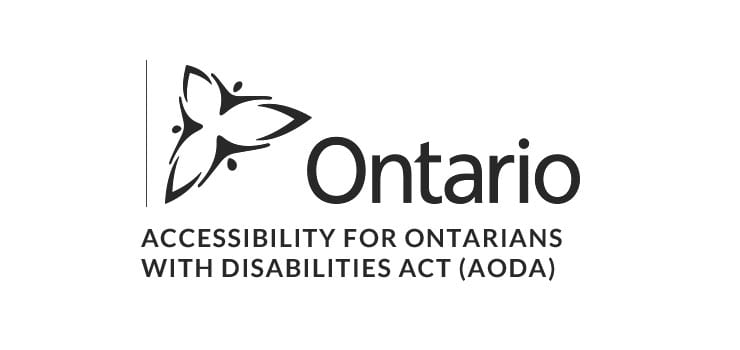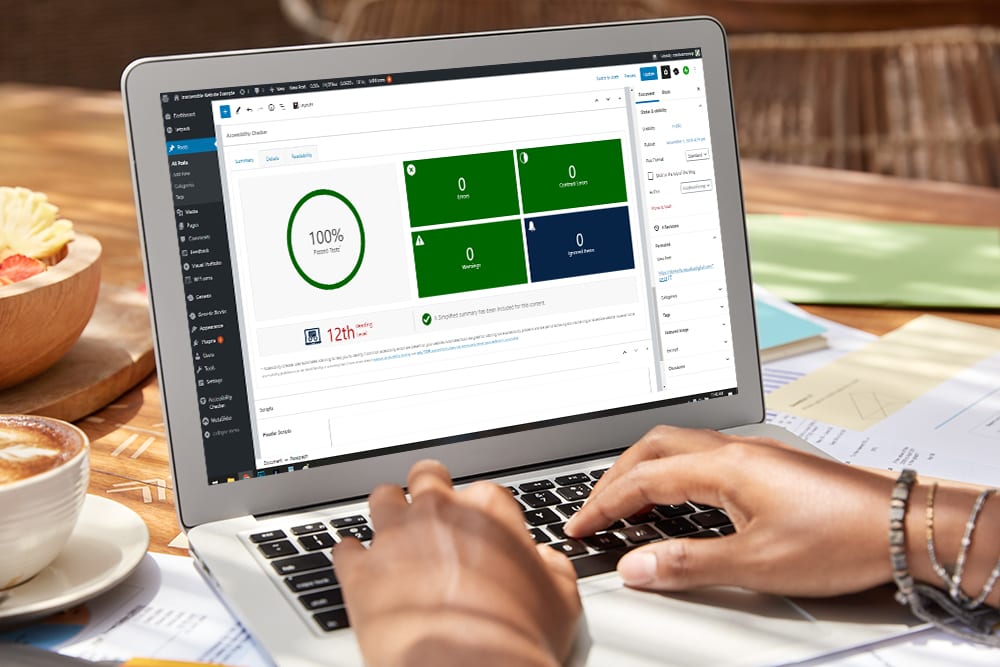
The Accessibility for Ontarians with Disabilities Act (AODA) was created by the Ontarian government in 2005. This act was created to establish and enforce a set of standards for accessibility in the public sector.
While the ultimate goal of the AODA is to make the province of Ontario accessible to all people by 2025, certain public organizations and businesses were required to make all web content accessible by January 1, 2021.

Article continued below.
Stay on top of web accessibility news and best practices.
Join our email list to get notified of changes to website accessibility laws, WordPress accessibility resources, and accessibility webinar invitations in your inbox.
Who Is Considered a Public Entity Under the Accessibility for Ontarians with Disabilities Act?
A public entity is a business or organization that has one or more employees and provides goods, services, or accommodations to the public. Businesses with 50 or employees are required to have WCAG compliant websites under AODA as of January 1st.
Some examples of businesses that must meet AODA compliance standards include:
- Retail stores & restaurants
- Healthcare organizations
- Banks
- K-12 and higher ed institutions
- Large enterprise companies
- Public libraries
- Government agencies and municipalities
Any organization that doesn’t meet required accessibility standards by January 1st may face government-enforcement fines. These fines vary by the severity of the accessibility violation(s), and the history of previous accessibility violations. Organizations may be forced to pay up to $100,000 each day in severe cases.
What Are the Web Accessibility Requirements Under the AODA?
The AODA uses the Web Content Accessibility Guidelines (WCAG) to establish the required accessibility standards for public entities.
WCAG helps developers and content creators understand accessible web content and design. These guidelines cover accessibility for a wide range of disabilities, including auditory, visual, cognitive, physical, speech, language, learning, and neurological disabilities.
WCAG starts with four overall principles: perceivable, operable, understandable, and robust. This is commonly referred to as the POUR acronym. Under the four principles, there are guidelines, success criteria, and levels of conformance.
The guidelines provide content authors and developers with goals to be met when creating accessible content. Guidelines are assigned a number of success criteria, which ensure that web content meets the necessary requirements of the accessibility guidelines. Every success criterion in the WCAG is assigned a level of conformance, ranging from A (lowest), AA, or AAA (highest). To meet the Web Content Accessibility Guidelines, a website must meet at least one of the conformance levels in full.
Under the Accessibility for Ontarians with Disabilities Act, public websites must meet Level AA conformance of WCAG 2.0 with the exception of two success criteria: 1.2.4 (live captions) and 1.2.5 (audio descriptions).
How Can I Test My Website for AODA Compliance?
The best way to test your website for accessibility under the AODA is to perform a combination of manual and automated testing.
Automated Testing
We recommend performing an automated accessibility scan of your website first.
An automated scan first will provide you with a quick understanding of the accessibility errors that exist on your website. This gives you to get an initial look at the scope of problems on your website so that you can decide whether a developer or content editor will need to fix them.
Our #1 recommended accessibility testing tool is Accessibility Checker, which is a WordPress plugin that checks web content against WCAG success criteria that is required for AODA compliance. Once it has scanned your web content, Accessibility Checker will put together an easy to understand accessibility report in your WordPress dashboard.

If you don’t have a WordPress website, you can use a free tool like WAVE or axe to test your website page-by-page or contact us for a full site scan as part of our accessibility audit process.
Manual Testing
After an automated accessibility scan, you will need to perform manual testing, as most experts believe that only about 30% of accessibility problems can be identified by automated tools. For example, while an automated tool may be able to check for missing alternative text, a human will have to decide whether that image really needs alternative text, if the provided text is contextually accurate, or if it is decorative and should be left blank.
To manually test your website for accessibility, follow these steps:
- Keyboard navigation testing – use only the keyboard (typically the tab key and arrows) to move through the pages of your website and interact with its features.
- Screen reader testing – use a screen reader to browse and interact with your website. We recommend testing your website with at least two different screen readers.
- Real-world user testing – hire users with disabilities to review your website and provide feedback.
After you have run an automated scan of your website and performed manual testing, you will have a good idea of all the accessibility issues that need to be fixed to ensure your compliance with AODA.
Get Help Making Your Website AODA Compliant
If you aren’t comfortable performing your own compliance testing, you can hire an accessibility agency like Equalize Digital to help you.
At Equalize Digital, our team of knowledgeable accessibility experts performs audits, manual testing, accessibility remediation, and user testing and can help you ensure that your website is compliant with the Accessibility for Ontarians with Disabilities Act. We offer competitive pricing for audits and have collaborative and retainer-based remediation packages that allow you to spread the costs of accessibility fixes over several months.
Contact us today to learn more about how we can help your business stay compliant with Ontario and Canadian laws.

